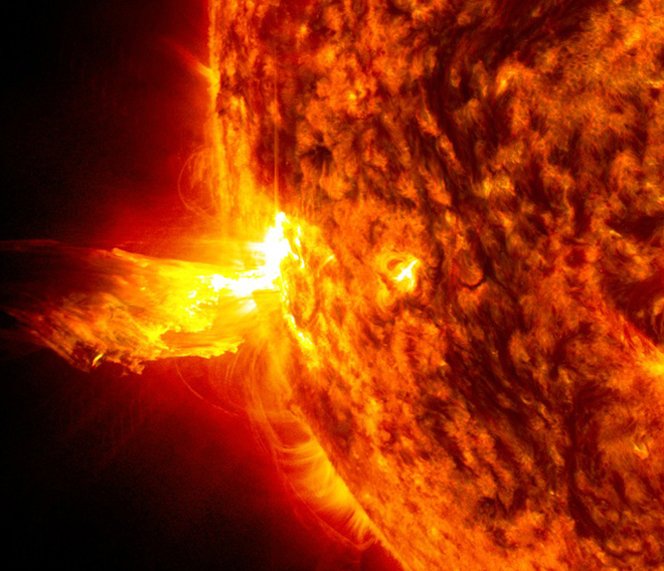The Sun displayed its formidable power today as it unleashed a significant solar flare, precisely positioned along the Sun-Earth axis and directed towards our planet. The Solar Astronomy Laboratory of the Space Research Institute of the Russian Academy of Sciences has classified this event as an X1.79 flare, indicating one of the highest intensity levels.

Photo: NASA
Understanding Solar Flares and Their Impact
Solar flares are sudden eruptions of magnetic energy on the Sun’s surface, often accompanied by coronal mass ejections (CMEs) that propel plasma and charged particles into space. The classification ‘X’ signifies the most intense flares, with numbers denoting their relative magnitude within this category. An X1.79 flare, therefore, is a high-level event, holding potential consequences for life on Earth.
Potential Earthly Repercussions
These geomagnetic phenomena can disrupt technological systems, sparking geomagnetic storms. Such disturbances may affect satellite communications, power grids, and navigation systems, thereby impacting industries reliant on these technologies. Historically, major solar flares have been known to cause widespread communication blackouts and power outages.
Scientific Observations and Reactions
Scientists observed a plasma ejection primarily aligned with the Sun-Earth line but deviating slightly north. While the precise impact on Earth remains uncertain, such events typically herald increased plasma emissions and a strengthened solar wind, both of which might incite geomagnetic storms upon reaching our planet.
Looking Ahead: Monitoring and Preparedness
Over the years, advancements in solar observation and forecasting have improved our ability to predict and mitigate space weather impacts. Organizations like NASA, equipped with cutting-edge telescopes and satellite imagery, play an essential role in monitoring solar activity and issuing timely warnings.
Today’s solar event serves as a reminder of the dynamic nature of our solar environment and the necessity for continued vigilance in space weather research to safeguard technological infrastructure and our daily lives.





